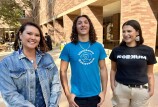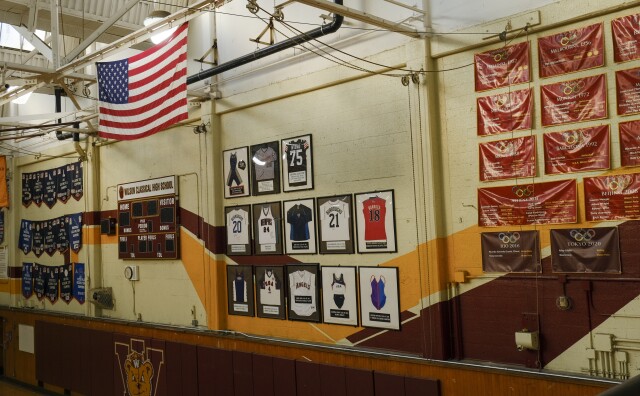Nearly five years after COVID-19 began, a recent national report shows that recovery from the pandemic for students will be a “long slog.”
“The State of the American Student,” a report by the Center for Reinventing Public Education (CRPE) states that the findings are “sobering, daunting, and discouraging,” and that the slow pace of recovery from the pandemic has left an indelible mark on education, with long-term implications for students’ income, racial inequity and social mobility in the United States.
“If policymakers and educators do not get serious about ensuring these students have access to proven interventions, then we will continue to see the educational impact of the pandemic reverberate for many years, both in our schools and in our economy,” the report stated.
For the last three years, CRPE — a research organization out of the Mary Lou Fulton Teachers College at Arizona State University — has released annual reports examining the academic, social, emotional and mental health effects of the pandemic on students. CRPE Executive Director Robin Lake said the reports were an attempt to ensure that schools wouldn’t go back to business as usual before students were “made whole.”
Fears that the pandemic would widen pre-existing opportunity gaps have come to fruition, according to the report’s summary of a wide span of research. The report focuses extra attention on certain groups: young children, disabled students, English learners and homeless students, and students who still lag far behind from where they would have been if not for the pandemic. Lake added these groups were largely not well served by schools before the pandemic began.
The report takes a sweeping look at the issues that have been harming students’ recovery since 2020, including chronic absenteeism, staffing shortages, poor teacher morale and student disengagement. These are all signs pointing to a pandemic recovery effort that will require a “long haul.”
Struggling students need more attention
Currently, schools are facing “gale-force” headwinds trying to address these challenges, the report states. Pandemic-era funding is drying up, declining school enrollment is stretching district finances, and many educators are facing burnout. But the worst part is that the problem is underappreciated, Lake said.
“Perhaps the most concerning thing to us is how little discussion there is about these problems,” Lake said.
Politicians are not talking about pandemic recovery, especially when it comes to the groups that have been struggling the most, she said. For instance, CRPE pointed out how some states, including California, do a poor job communicating data about how students have fared since the pandemic.
Additionally, parents do not seem to know just how far behind their children are — thanks in part to grade inflation and some schools’ poor communication, Lake said.
USC’s Center for Economic and Social Research conducted interviews with the parents of disabled students.
One parent did not learn from the school that their child was failing two courses, making him ineligible to graduate from high school: “I didn’t know until we were in the process of graduation,” the parent told interviewers.
The number of students who are served under the Individuals with Disabilities Education Act has skyrocketed in recent years. It dipped during the peak of the pandemic when school campuses were closed, but surged again as students returned to the classrooms. It’s not clear why, but different theories have emerged.
While it states that kindergartners who have not attended preschool are more likely to have academic and social struggles, including a rising number of behavioral issues and speech delays, the report notes that students who start school behind their peers may be being over-identified as having a disability or that the high numbers could be because students who might have simply been treading water in a previous era are now being correctly identified as having a disability.
The problems faced by disabled students exemplify many of the biggest struggles of pandemic recovery efforts in schools. Disabled students’ academic performance has long lagged behind other students, but that gap has widened in the wake of the pandemic. The teacher shortage is particularly acute among special education teachers, now that they are needed most. Meanwhile, some effective efforts, such as tutoring, are not reaching disabled students. Low expectations for students with disabilities is a crisis that has failed to garner proper attention and resources, Lake said.
One parent interviewed for the report said that getting help for their disabled students required constant fighting. “Multiple times, they promised in-person, in-school tutoring — which they just were understaffed and were never able to find anyone,” the parent said.
Another parent said that without speech therapy, their son with epilepsy fell behind in school during the pandemic.
“He fell further behind because my husband and I tried our best, but we can only do so much if you’re not a teacher, which is very frustrating,” the parent said in an interview.
Recovery solutions are straightforward
The strategies that helped schools recover have “not been rocket science,” Lake said.
Many schools have been successful with programs such as tutoring, high-quality curricula, extending learning time and improving communication with parents. Some schools are making these strategies a permanent part of the school experience, which is good news: Tutoring and small-group instruction are some of the most powerful tools schools have at their disposal, the report states.
But scaling can be tricky, and many of the students who need help the most are not getting it, CRPE notes. Fewer than half of students who most needed that help enrolled in summer school, according to a Rand study, and just 1% of eligible students in Louisiana enrolled in a tutoring program for struggling readers.
The report recommends focusing on the specific needs of struggling students, such as students with a disability or English learners, rather than so-called average students. Addressing the issues that these students are struggling with will pay dividends for the broader student population, Lake said.
Some schools are demonstrating that recovery is possible, even if it’s not the dominant story right now. Students and educators alike are struggling, but there is a renewed understanding of the crucial role that school plays in a community. That has led to some schools rebuilding and strengthening that institution.
“During the pandemic, you remember, there was so much talk about more joyful education, more engaging, more flexible,” Lake said. “We think that that has actually taken hold.”
-
EdSource is an independent nonprofit organization that provides analysis on key education issues facing California and the nation. LAist republishes articles from EdSource with permission.










